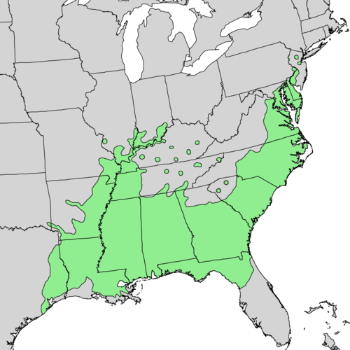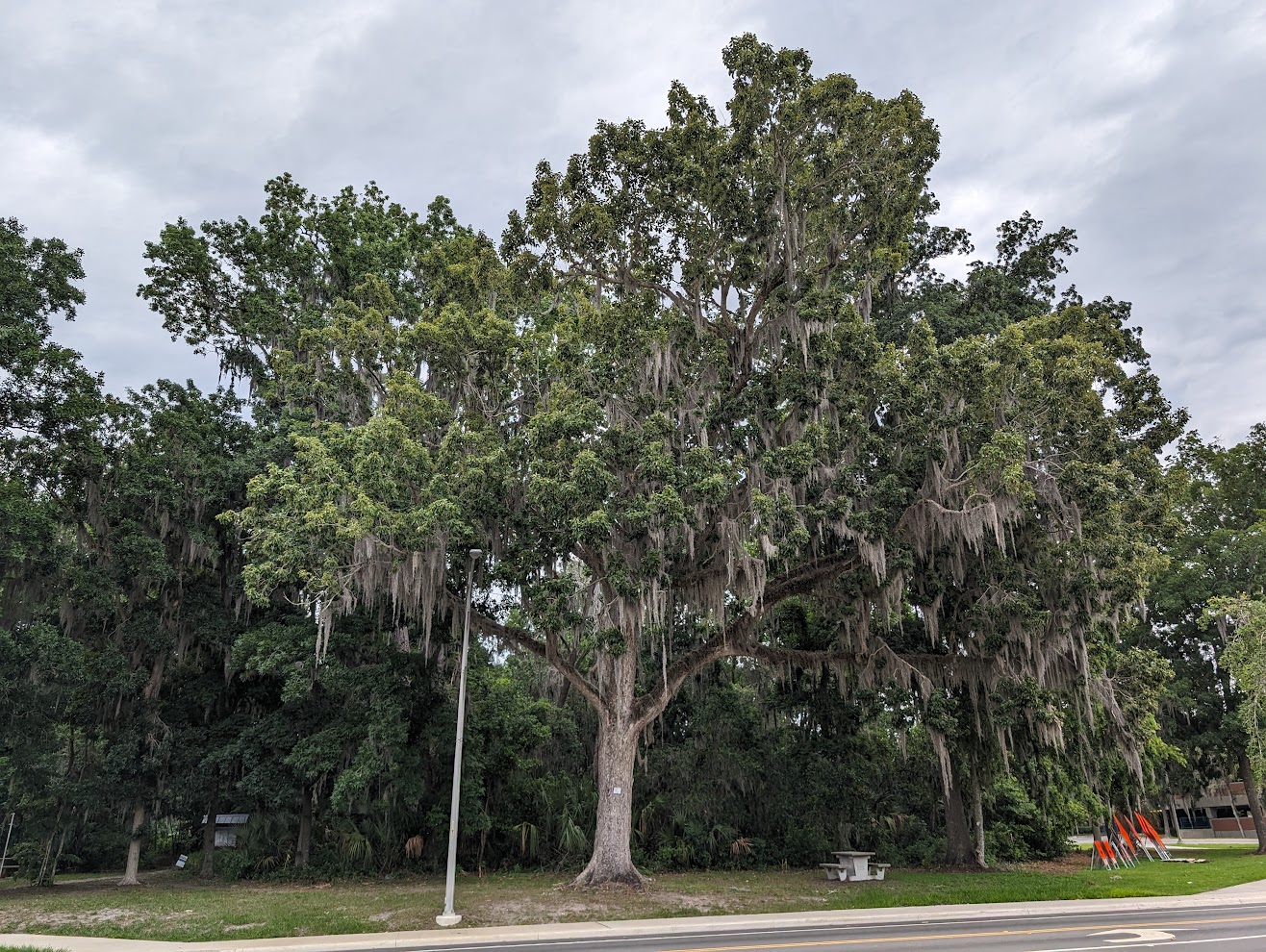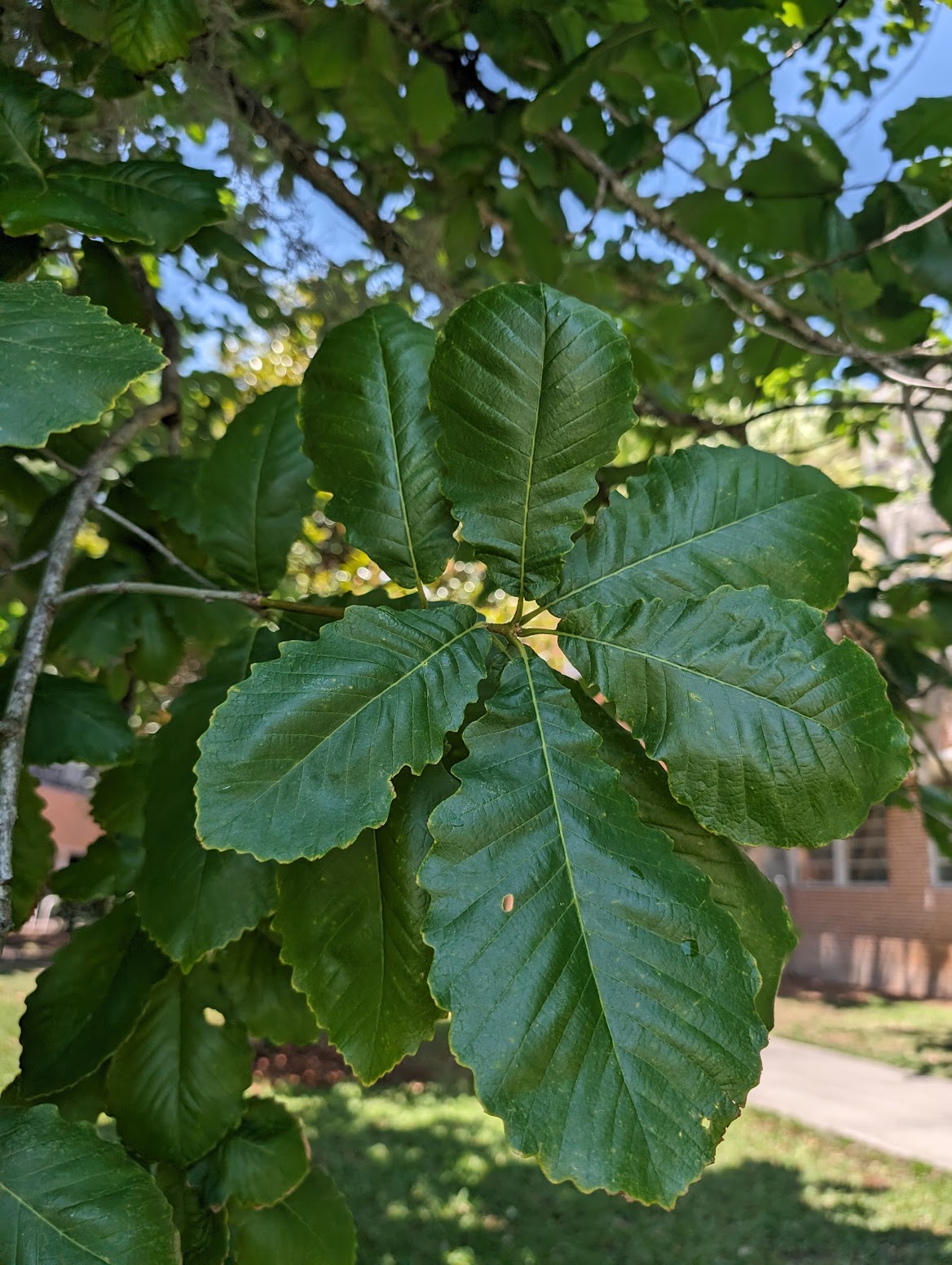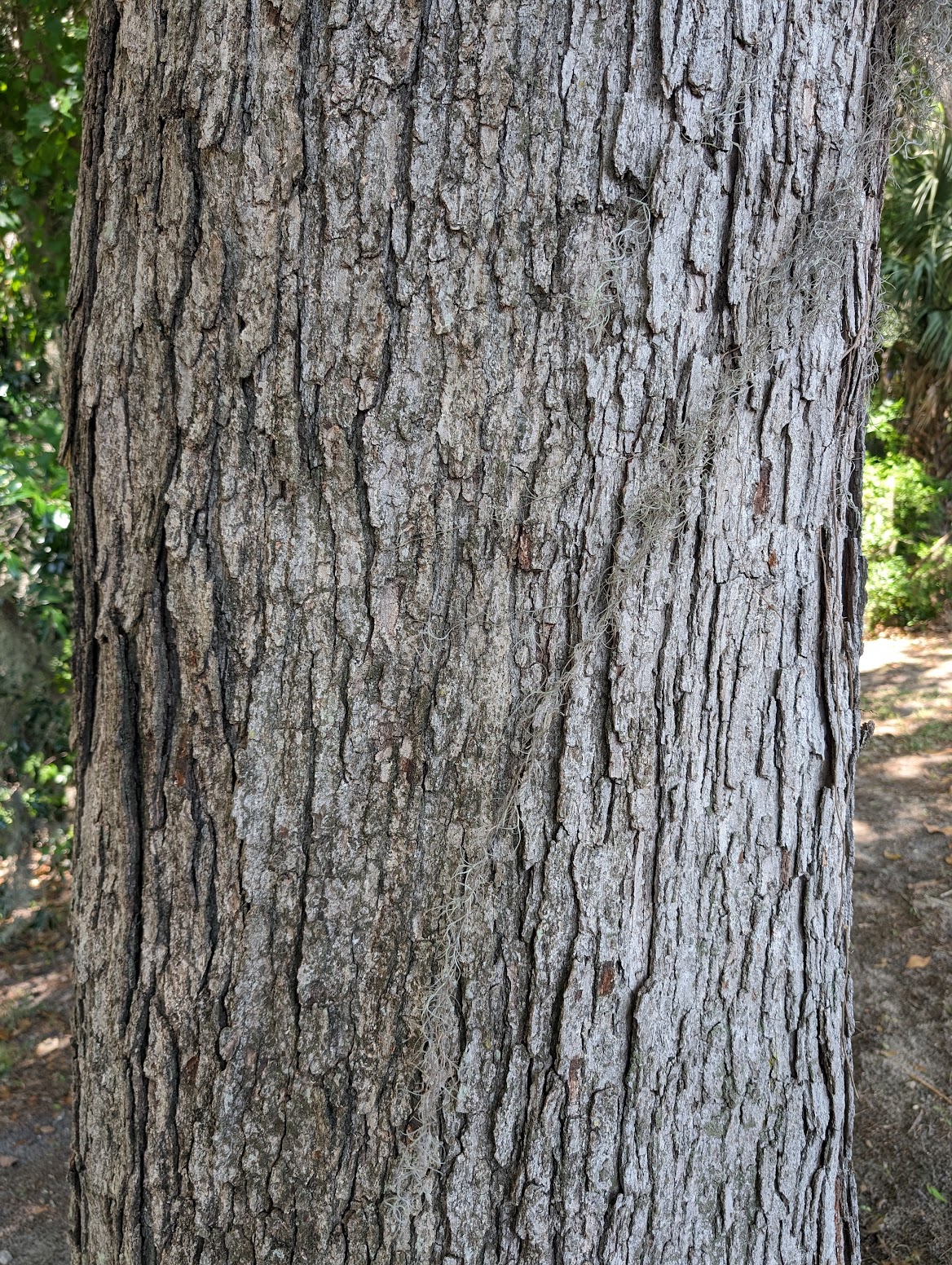Fagaceae – Beech Family
In 2024, the swamp chestnut oak near the Welcome Center measured 111 feet tall and had a diameter of 31 inches. Based on USDA Forest Service models, it will absorb approximately 2,982 lbs. of carbon over the next 20 years, offsetting up to 12,070 car miles worth of carbon dioxide.
In 2024, the swamp chestnut oak near McCarty woods measured 91.2 feet tall with a diameter of 41 inches. Based on the USDA Forest Service models, it will absorb approximately 2,299 lbs. of carbon over the next 20 years, offsetting up to 9,306 car miles worth of carbon dioxide.
See all species on our Campus Tree Tour.
Introduction
The swamp chestnut oak, also known as the basket oak, is a species of white oak with distinctively large leaves. This tree is found throughout the Southeastern United States, and it naturally grows in moist soils and well-drained floodplains. Despite its name, the oak produces acorns, not chestnuts, that are valuable to wildlife as a food source. This oak is also commonly planted in urban landscapes, and its wood is used for furniture and basket making.
Physical Description
Life expectancy: 100 – 200 years
Height: 60 – 80 feet, up to 100 feet
Crown: 40 feet
Diameter: 24 – 36 inches
Bark: Light grey and white with flakey pieces that can peel off. It develops shallow, furrowed ridges with age.
Leaves: Deciduous, simple, and alternately arranged upon the twig. Leaves vary in size and become broader from the middle to end of the leaf with a pointed tip. The margin (edges) has large, rounded teeth that are not pointed or sharp. The top surface is dark green, and underneath is a paler green with silvery pubescence (hairs).
Twigs: Reddish brown twigs with a cluster of buds at the tip of the twig, a distinguishing feature of oaks.
Flowers: Yellow-green catkins (male flowers) and small spike flowers (female) are produced in the spring.
Fruits: Large acorns (1 inch) where a brown scaley cup covers over a third of the nut. The acorns become thick and heavy, and they ripen in the fall.
Key Identification Characteristics: bark, large leaves, terminal buds
Past and Present Uses
The swamp chestnut oak, previously called “basket oak,” was a popular timber species within the U.S. cotton belt during the 1800s. Its wood was used for various purposes such as flooring, posts, wagons, and tool handles. When the wood was split, it produced fibers that were used to weave baskets that transported cotton from fields. When cows freely ranged, the oak was also termed “cow oak” since its large, sweet acorns attracted natural cow congregations.
Presently, the swamp chestnut oak is a popular commercial species in hardwood markets. Its wood is used for construction, agricultural implements, fenceposts, fuel, furniture, and flooring. The tree can also be planted in urban areas to provide shade.
Ecological Importance
Origin: Native to the United States
Native Range: Found along the Atlantic Coastal Plain from New Jersey south to Florida, west to Texas, and north to Illinois.

Figure 1. Native range of Swamp Chestnut Oak. Photo credit: U.S. Geological Survey
The swamp chestnut oak grows best in humid and temperate climates within well-drained bottomlands, floodplains, and mesic slopes. The species grows predominantly in rich and moist soils, and it is less common on dry forest ridges. The tree is commonly associated with other hardwood species such as white ash, hickories, sweetgum, American elm, and yellow-poplar.
The acorns of the swamp chestnut oak are a highly valuable food source for a variety of wildlife. As a white oak, its acorns have low tannin content, making them sweet instead of bitter to mammals and wild turkey. Smaller birds, mammals, and insects use the tree’s cavities for nesting.
More Information
https://edis.ifas.ufl.edu/publication/ST484
References
Carrey, J. H. (1992). Quercus michauxii, Q. montana. In: Fire Effects Information System, U.S. Department of Agriculture, Forest Service, Rocky Mountain Research Station, Fire Sciences Laboratory. https://www.fs.usda.gov/database/feis/plants/tree/quespp3/all.html
i-Tree. (2006). Tree tools - calculate the benefits of trees!. i-Tree. https://www.itreetools.org/
Quercus michauxii. Plant Finder, Missouri Botanical Garden. (n.d.). https://www.missouribotanicalgarden.org/PlantFinder/PlantFinderDetails.aspx?taxonid=280721&isprofile=0&
Swamp Chestnut Oak (Basket Oak). Missouri Department of Conservation. (n.d.). https://mdc.mo.gov/discover-nature/field-guide/swamp-chestnut-oak-basket-oak
Swamp Chestnut Oak. Plant Fact Sheet. USDA NRCS. (2002). https://eec.ky.gov/Natural-Resources/Forestry/ky-champion-trees/Documents/Oak%20swamp%20chestnut.pdf
The University of Texas in Austin. (n.d.). Quercus michauxii. Lady Bird Johnson Wildflower Center - The University of Texas at Austin. https://www.wildflower.org/plants/result.php?id_plant=qumi
Virginia BIG Trees. (n.d.). Lifespans of common trees in Virginia. https://bigtree.cnre.vt.edu/lifespan.html



